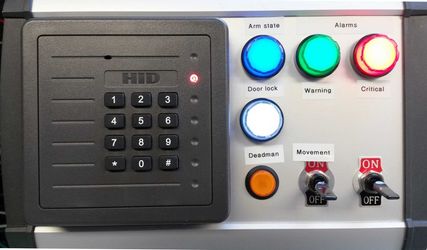...
|
|
Basic definitions:
- System arm status: Indicates whether the system is armed or disarmed. A disarmed system will direct the motion sensors and the door contacts to the lone worker feature while an armed system will raise an alarm as soon as a door contact is open or a motion is detected within the facility, as this is interpreted as an intrusion.
- Dead-man alerts and button: if an operator is working in a facility, there are a lot of dangers that can affect his health and even his life. Therefore, the authorities of many countries have introduced by law the need of a mechanism that identifies that the operator is alive. This is normally detected by movements inside the facility while it is disarmed. If there is no movement in some predefined time, an alarm (warning status) will be fired (switching on a buzzer or a siren) and the operator has some time to push the "dead man button", indicating that he is well. If the operator does not react in time, the alarm is escalated (critical status) and the NOC must send someone to investigate the facility in order to check that the operator is okay.
- Door lock: we use a locking mechanism that is activated through a relay. If we activate the relay, the door lock opens and the facility can be accessed. When the relay is not activated, the door is locked.
- Door contact: this is the sensor that we use to detect if the door is open or not. Ideally, a facility has one of these sensors at each and every door and window that can give access to the facility, in order to detect any unauthorized access.
- Correct code: a code is considered correct in case there is an authorized contact that has access enabled to the facility at the time the code is entered.
- Time periods: periods of time that can be configured in order that an operator has access to a facility just during a selected time frame.
...
